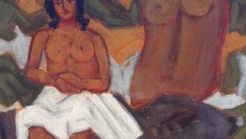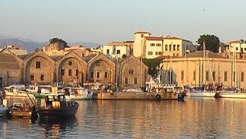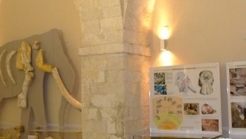

Greece
The archaeological collections was recently enriched with the generous offer of coins and numerous findings of various periods, that Adonis Kyrou had collected from all around the island, as well as from other places. A significant number of pictures and various ecclesiastical exhibits also comes from collection, and offers.
The manor of Chatzigiannis Meksis, in which the museum was later housed, was built between 1795 and 1798 in a Π shape, and is comprised of a ground floor and two upper floors. The exhibits of the museum encompass more than 4000 years of cultural history of the island. The archaeological collections was recently enriched with the generous offer of coins and numerous findings of various periods, that Adonis Kyrou had collected from all around the island, as well as from other places. A significant number of pictures and various ecclesiastical exhibits also comes from collection, and offers.
The flag of the Revolution, the remains of Bouboulina, the portraits and the guns of hers and other fighters, historical documents, personal belongings, pictures of ships, are all a testament to the contribution of the island to the heroic Revolution of 1821.
Finally, the objects of every day use, as well as those of residential and naval woodworking (chests, furniture, figureheads), the costumes and the weavings that we find all around the museum, are invaluable to the way of life of the inhabitants before and after the Revolution.
The museum’s creation is mostly owed to Professor of the University of Athens G. A. Sotiriou. Following his urge, the manor of Chatzigiannis Meksis, one of the first governors of the island during the Rebellion, was given to the State by his heiresses, Kalomoira Meksi and Niketa Thermisioti-Katsina to house the archaeological, historical and folkloral collection of the island.


Aims to be a welcoming place for every citizen , a concentration and fruitful conciliation creators, of art lovers and friends, designated development spirit of solidarity, cooperation and solidarity, but also intellectual and aesthetic cultivation, training and entertainment.


How can someone describe Chania? The narrow streets of the old town, its’ center, its’ quarters, the smell of the multicultureness throughout the centuries. Noone can conquer it completely.


The paleontological collection of the Municipality of Rethymnon, which consists of findings from excavations from all over the prefecture by German scientist Siegfired Kuss (University of Freiburg), will form the basis of the exhibition. The Goulandris foundation has been looking after this collection in collaboration with the University of Athens (Historical Geology and Palaeontology Faculty).
1039 Ε 6061 01515 00